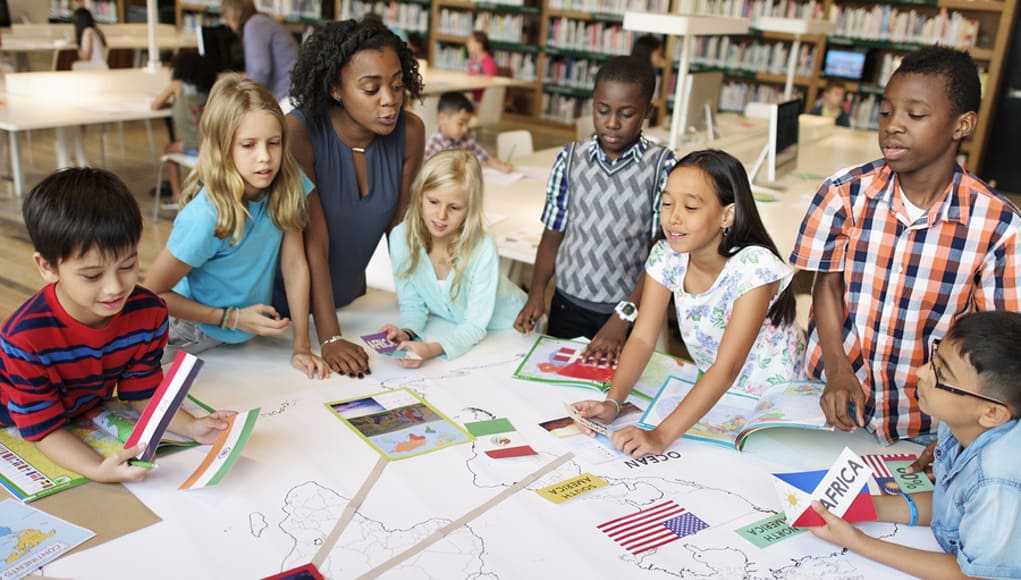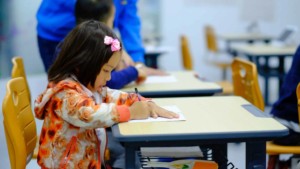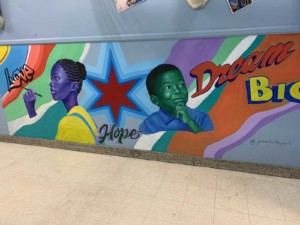PBL for Equity & Inclusion of Students with Disabilities

By Ace Parsi
This post was originally published by the Buck Institute for Education
How do we respond to struggling learners, including those with disabilities, when they just can’t seem to get it? The unfortunate fact is that we too often double down on ineffective “skill and drill” approaches that fail to engage them, rather than considering different routes to learning. The consequences are profound: struggling learners experience cumulative frustration with no relief in sight and schools perpetuate different tracks of education for students, one focused on the development of foundational skills and the other attending to content learning as well as to the full range of knowledge, skills, and dispositions essential for 21st century success.
There is a better way. We don’t have to preserve a dichotomy between foundational skills and the knowledge and behaviors that position students for success in school, in the workplace and in the community. We know from research in learning sciences that opportunities to facilitate educational transfer in relevant, engaging projects not only develops 21st century skills like critical thinking, problem solving, collaboration, and communication skills, but also reflects best practice in literacy and math instruction. It is simply a choice that we make as a society in how we think about learners and learning; Do we believe that approaches like project-based learning should be prioritized as interventions of choice for all learners and not just our high-flying students? Should we think about project-based learning as best practice for students with disabilities?
The answer to this question should not be a simple yes, but a “yes and.” Yes, we can leverage project-based learning and more rigorous hands-on learning opportunities for all students and we must create the essential supports to ensure that students with identified disabilities and other traditionally struggling learners can thrive in classrooms where these approaches are implemented. We needn’t modify our expectations of what students with disabilities and other struggling learners can achieve through these approaches, rather, we must take steps to accommodate their needs. Whether a student struggles with reading, writing, math, executive functioning or a combination of these issues or a physical disability that inhibits their capacity to engage a project in a pre-conceived way, we need to guard against the mistaken notion that something within the child is broken. Our challenge and opportunity is to see that hurdles to learning focus not on the intrinsic weakness that students face by virtue of their disabilities but rather on the ways we conceptualize, design and implement learning experiences.
A High School Accommodates Struggling Learners
In a recent case study, I highlight how a rural high school, Warren New Tech High School in Warrenton, North Carolina, and a teacher, Michael Williams, took steps to intentionally create greater accessibility in project-based learning experiences for their students with disabilities. Steps they took included collaborative planning between special and general educators in the initial design of projects, sufficient accommodations to help students with disabilities access supports in the implementation of projects, and explicit checkpoints in the life of the project to ensure students were able to access underlying content that the project is based on. The results they achieved met and surpassed their expectations, proving that a little intentionality on the front end goes a long way.

The challenge, though, goes beyond how we create space for these sorts of accessible project-based learning experiences in a single school, but how do we build greater accessibility and inclusion throughout the system? On this point, states and districts would be wise to build system capacity for inclusion through ensuring preparation and professional learning for both teachers and leaders. Keys to systemic change must consider strategies that focus on specific skills like implementing project-based learning through a UDL lens, setting high expectations, being explicit and proactive about addressing adults’ underlying biases that would undermine high expectations for all students, and providing flexibility and supports to educators through structures that contribute to strong systems. Leveraging common planning time and strong PLCs, flexibility in roles of educators, and overcoming constraints in master scheduling to enable this work are also immensely important. There’s a lot that goes into this endeavor and it’s work that can’t be left to chance.
The scale of our challenges in education go beyond tinkering and the seriousness of this challenge demands more than generalities. If we are serious, we have to attack both narrow mindsets and narrow practices. That’s the only way we will meet our commitment to a stronger, more just and inclusive world.
Read the case study at the National Center for Learning Disabilities.
For more from Ace Parsi, see:
- 4 Ways We Can Fund Personalized Learning to Create More Equitable Schools
- A Parent’s Call to Action: Leveraging Personalized Learning for Your Child
- UDL: A Guiding Framework for a Personalized Learning Equity and Inclusion Agenda
Ace Parsi is the Personalized Learning Partnership Manager at the National Center for Learning Disabilities (NCLD). Follow them on Twitter: @ncldorg
Stay in-the-know with all things EdTech and innovations in learning by signing up to receive the weekly Smart Update.





0 Comments
Leave a Comment
Your email address will not be published. All fields are required.